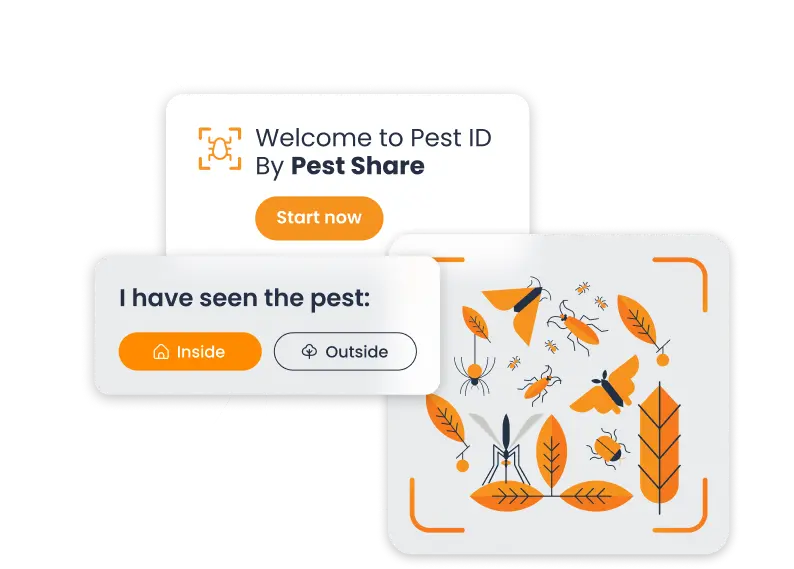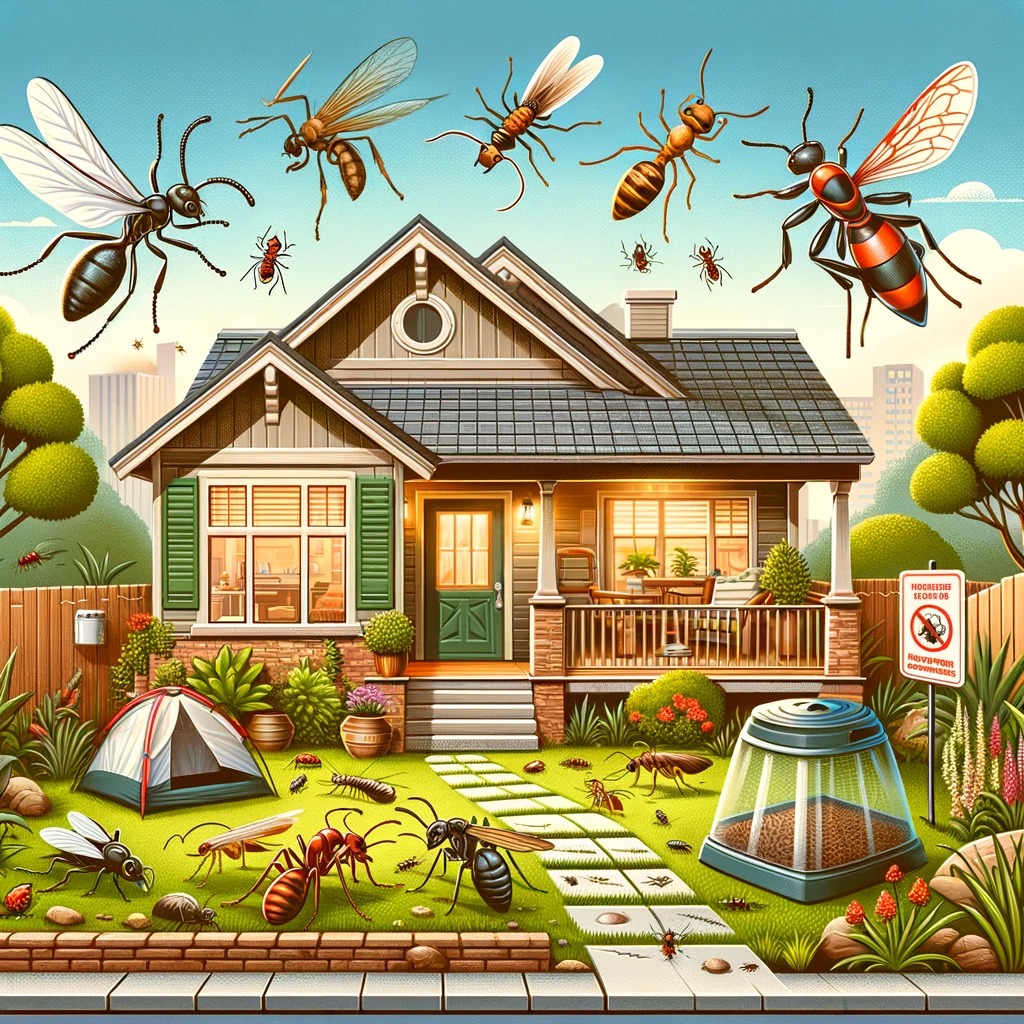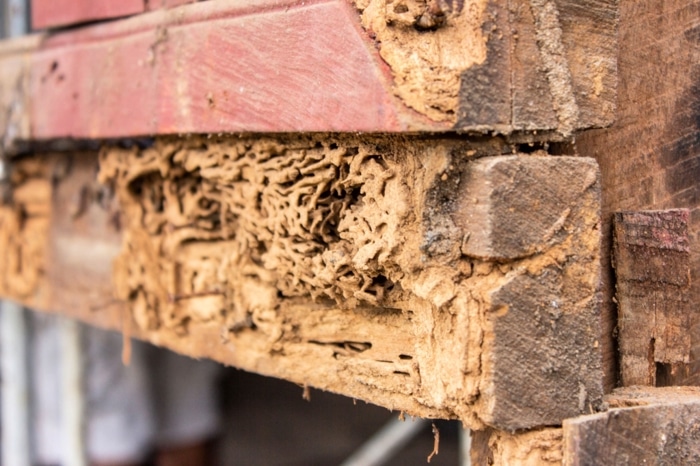Residents of Texas know all too well the frustration of unwanted guests: pests that thrive in the state’s diverse climates, from the arid deserts to the humid Gulf Coast. These unwelcome intruders not only pose a nuisance but can also threaten the comfort, health, and safety of your home environment. The battle against these pests is ongoing, requiring constant vigilance and an effective strategy to keep them at bay. This guide is your arsenal in the fight against Texas’s toughest bugs, providing you with the knowledge and tools needed to maintain a pest-free home.
Understanding Texas’s Pest Landscape
Texas’s unique geographical and climatic diversity makes it a breeding ground for a wide variety of pests. The state’s landscape ranges from dry, hot western regions to humid eastern coastlines, each offering ideal conditions for different pests. This variety means homeowners must be prepared to deal with a broad spectrum of pest issues throughout the year.
Seasonal changes significantly influence pest activity in Texas. Warmer months see an uptick in insect populations, including mosquitoes, flies, and wasps, while cooler months might bring rodents seeking shelter and warmth inside homes. Understanding these patterns is crucial for implementing timely and effective pest control measures.

Modern Pest Control, Simplified.
Common House Bugs in Texas
Among the myriad of pests in Texas, several have earned the notoriety of being the most common invaders of residential homes. These include:
Cockroaches:
Particularly the German and American varieties, thrive in the warm, humid conditions prevalent throughout much of Texas. They seek out food sources in homes, contaminating surfaces and spreading diseases.
Ants:
Fire ants, carpenter ants, and sugar ants are frequent unwelcome visitors, each causing their own set of problems, from painful stings to property damage.
Termites:
These silent destroyers are especially prevalent in Texas, causing significant structural damage to homes by feeding on wood.
Spiders:
While most are harmless, Texas is home to some dangerous species like the brown recluse and the black widow, which pose significant health risks.
Identifying the early signs of these pests’ presence can prevent full-blown infestations. Look out for droppings, physical damage to structures, nests, or the pests themselves as clear indicators.
Common Bugs in Texas Homes
Beyond the usual suspects, Texas homes can also play host to a range of other bugs that, while less destructive, can still be a nuisance. These include silverfish, known for damaging paper goods and textiles; earwigs, which are more a nuisance than a threat; and various species of beetles that can invade pantry goods.
Additionally, bed bugs have seen a resurgence in recent years, hitchhiking on luggage or clothing to infest homes. These pests are particularly challenging to eliminate due to their resilience and the difficulty of detecting them early on.
Understanding the habits and preferences of these common bugs is the first step in creating an unwelcoming environment for them. For instance, reducing moisture in and around your home can deter many pests, while proper food storage and disposal can help avoid attracting others.
Texas House Bugs Identification Guide
Accurate identification of house bugs is critical for effective control. Each pest has specific habits and vulnerabilities, and strategies that work for one may not be effective against another. For homeowners, recognizing the pest is the first step in seeking the right solution, whether it’s a DIY method or calling in professional help.
- Cockroaches are easily identified by their flat, oval bodies and rapid movement.
- Ants can be distinguished by their size and colour, with fire ants being small and reddish and carpenter ants larger and black.
- Termites often get mistaken for ants but can be identified by their thicker waists and equal-sized wings.
- Spiders vary widely in appearance but are generally recognized by their eight legs and solitary nature.
For more ambiguous pests like beetles or bed bugs, consulting a pest identification guide or professional can be helpful. High-quality photos or even captured specimens can aid in this process, ensuring that the chosen pest control method is appropriately targeted to the specific invader you’re dealing with.
Texas Bug Infestation: Signs and Solutions
Recognizing the early indicators of a bug infestation is crucial for Texas homeowners. Telltale signs often include visible pest sightings, droppings, damage to property, and unusual sounds within walls or under floors. For instance, termite infestations might be signalled by discarded wings, mud tubes on exterior walls, or wood that sounds hollow when tapped. Similarly, rodent infestations can be identified by droppings, gnaw marks, and nocturnal sounds of movement.
Once an infestation is suspected, the first step is to accurately identify the pest, as this will dictate the most effective treatment method. For common bugs like cockroaches and ants, over-the-counter sprays and baits might provide a temporary solution. However, for more severe or persistent infestations, such as termites or bed bugs, professional pest control services are often necessary to fully eradicate the pests and prevent future invasions.
Preventative measures play a key role in avoiding infestations. Regularly inspecting your home for signs of pests, sealing cracks and openings, and maintaining a clean and clutter-free environment can significantly reduce the risk of pest problems. Additionally, employing natural deterrents and making strategic landscaping choices can help keep pests at bay without the need for harsh chemicals.
Types of Bugs in Texas: Preventive Measures
Preventing bug infestations in Texas homes requires a comprehensive approach tailored to the specific pests common to the region. For ants and cockroaches, eliminating food sources is paramount. This includes storing food in sealed containers, promptly cleaning up spills, and regularly disposing of garbage. Additionally, reducing moisture through proper drainage and fixing leaks can deter these pests, as they are often attracted to water.
For termite prevention, homeowners should focus on reducing wood-to-ground contact around their property, storing firewood away from the home’s foundation, and ensuring that gutters and downspouts are functioning properly to direct water away from the structure. Regular inspections can also help catch early signs of termite activity before significant damage occurs.
Spider infestations can be minimised by keeping outdoor lighting to a minimum, as the lights attract the insects that spiders feed on. Regularly sweeping and vacuuming corners, ceilings, and other areas where spiders may spin webs can also help control their populations.
Natural Remedies vs. Professional Pest Control

While natural remedies can be effective for minor pest issues, they may not always provide a long-term solution for more severe infestations. Essential oils, diatomaceous earth, and borax are popular natural options that can deter or kill certain pests without the need for harsh chemicals. However, these remedies often require consistent application and may not penetrate deep enough to reach nests or colonies hidden within walls or under floors.
Professional pest control services offer a more robust solution, with access to commercial-grade pesticides and the expertise to safely apply them. Professionals can also provide targeted treatments for specific pests and infestations, ensuring that the problem is fully addressed. For homeowners dealing with pests like termites, bed bugs, or rodents, professional intervention is often the most effective and efficient way to eliminate the infestation and prevent future occurrences.
Seasonal Pest Control Checklist for Texas Homes
Maintaining a pest-free home in Texas requires year-round vigilance, with specific measures needed to address the changing pest populations across seasons. Spring is the ideal time for a thorough home inspection to identify and seal potential entry points, such as cracks in the foundation, gaps around windows and doors, and openings around utility lines. This is also a good time to trim back vegetation and trees away from the house, as these can provide bridges for pests to enter.
Summer demands particular attention to moisture control, as the increased humidity can attract pests. Ensure that air conditioning units are functioning properly and that there are no areas of standing water around the property. Regular pest treatments, especially for mosquitoes and ants, can help keep populations under control during their most active months.
Fall preparation should include cleaning gutters, sealing up the home to prevent entry from rodents seeking shelter from the cooler weather, and applying a perimeter pest control treatment to deter overwintering pests. Finally, winter is a good time to focus on interior inspections and treatments, as pests that have made it inside seek warmth and food sources.
Safeguarding Your Home Against Texas’s Toughest Bugs
To keep your home in Texas safeguarded against pests, a multi-layered approach is essential. This starts with structural maintenance to seal potential entry points, using weather stripping around doors and windows, and ensuring screens are intact and free of holes. Regularly inspecting and cleaning areas prone to moisture, such as bathrooms and kitchens, can prevent the conditions that attract pests. Employing landscaping practices that discourage pests, such as keeping mulch, wood, and dense vegetation away from the home’s foundation, further reduces the risk of infestation.
The Role of Professional Pest Control Services
While DIY measures and home maintenance play a significant role in pest prevention, there are situations where professional pest control services are indispensable. These experts bring a level of knowledge and resources that can be crucial in identifying, preventing, and treating pest infestations. Regularly scheduled professional inspections can catch signs of pest activity early on, preventing minor issues from becoming major infestations.
Emergency Situations and Rapid Response
Certain pest situations demand immediate attention. Swift action is necessary when dealing with aggressive pests, large infestations, or pests that pose a significant health risk or threaten the structural integrity of your home. In these cases, professional pest control services are not just recommended; they are essential. Their expertise can ensure that the problem is addressed safely and effectively, providing peace of mind to homeowners.
Conclusion
Maintaining a pest-free home in Texas is an ongoing battle, but it’s one that can be won with the right knowledge, strategies, and resources. By staying informed about the pests common to your area, implementing preventive measures, and knowing when to call in the professionals, you can protect your home and your family from the nuisances and dangers pests present.
Don’t let pests take away from the joy of calling Texas home. Take action today by reviewing your pest management plan, making necessary adjustments, and scheduling a professional inspection if needed. A pest-free home is not just a goal—it’s a commitment to the health and safety of your living environment.





